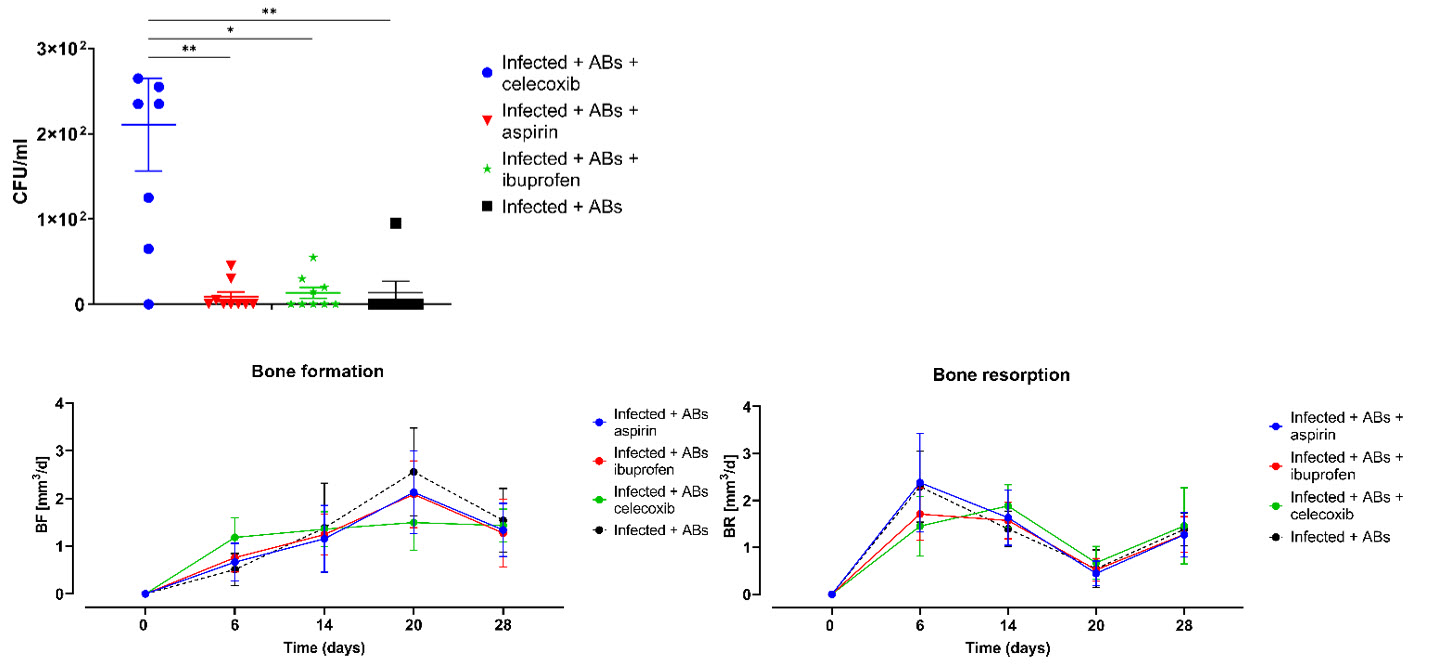Investigating the impact of nonsteroidal anti-inflammatory drugs (NSAIDs) treatments on fracture-related infection
Background
Non-steroidal anti-inflammatory drugs (NSAIDs) are widely used in trauma therapy due to their anti-inflammatory and analgesic effects and as an alternative to the use of opioids. The current clinical guidelines of many orthopaedic societies recommend the use of NSAIDs for pain management in the perioperative course of total endoprosthesis or surgical fracture treatment. NSAIDs reduce systemic inflammation and pain by decreasing prostaglandin synthesis (COX inhibitors). Since inflammation and prostaglandins play an important role in bone healing, NSAIDs can have a negative impact, especially when taken in the early inflammation-related phase of fracture healing. The role of COX selectivity remains controversial and poorly investigated.
Goal
Determine whether COX selectivity differentially affects antibiotic activity and bone healing in a rat model.
Results
Celecoxib (COX2 inhibitor) in combination with antibiotics showed a negative effect in clearing the infection. Despite this negative effect, celecoxib treatment showed a higher bone formation and a lower bone resorption in the early stage of the infection. Further investigations are ongoing to evaluate whether a short NSAID treatment shows better outcome compared to a long NDAIS treatment.


